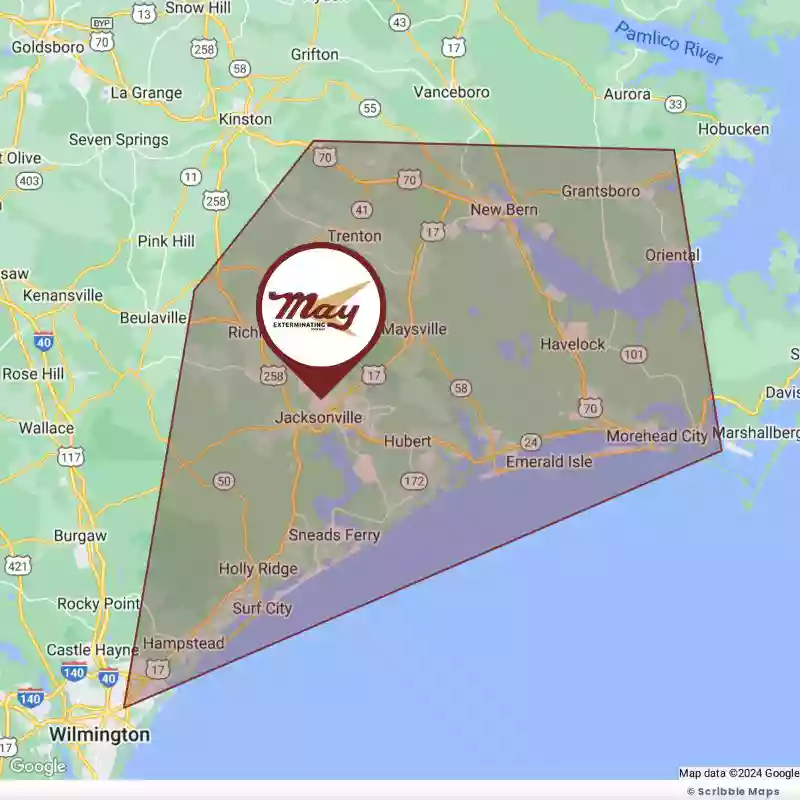Pest Control in Eastern North Carolina
Welcome to May Exterminating, your local pest control experts in Eastern North Carolina. With over 60 years of experience, we have proudly served the Jacksonville and Eastern NC area since 1963. Our team of skilled exterminators is committed to providing exceptional customer service and effective treatments for all your pest control needs. When you sign up for our comprehensive pest control package, you are guaranteed protection from the following pests:
- Spiders
- Ants
- Cockroaches
- Silverfish
- Crickets
- Stinging Insects
- Mice & Rats (some restrictions)
At May Exterminating, we prioritize your satisfaction above all else. We offer same-day services for most areas, ensuring your pest problems are promptly addressed. Our service warranty also gives you peace of mind, knowing that we are dedicated to exceeding your expectations. If any pest problems occur within the first 30 days of our service, we will re-treat your home for free. Please note this does not apply to Bed Bug and Termite services.
Comprehensive Pest Control Services
Our expert technicians are equipped with the best technology in the industry to keep your home pest-free. We also understand the importance of keeping your family safe, which is why our family-friendly treatments prioritize the well-being of your children and pets. Here is how our pest control service works:
- Our expert technicians conduct a thorough, free inspection of your property to identify potential pest entry points, nesting areas, and existing infestations.
- We create tailored pest control solutions based on the specific needs of your property. Our approach is not one-size-fits-all; we address your unique pest challenges.
- Depending on your area, our exterminators will provide same or next-day services using top-of-the-line products.
- After we treat, our services are backed by a 30-day guarantee. If the pests come back, so do we! Note: This does not apply to bed bug or termite services.
Locally-Trusted Since 1963
With over six decades of experience, we bring a wealth of knowledge and a deep understanding of local pest challenges. As a family-owned business, we take immense pride in our roots and prioritize the well-being of our community. Unlike larger corporations, we offer a personalized touch, tailoring our services to the unique needs of our neighbors. When you choose May Exterminating, you're not just hiring a pest control service; you're working with a neighbor who treats your home as its own. Trust in the experience that comes from being a part of this community for nearly six decades!
Contract-Free Services For Your Flexibility
Unlike other companies that bind you to long-term commitments, we understand that your needs may change. Our contract-free approach means you have the power to tailor our services to fit your schedule and needs. We believe in earning your trust with every service, making sure our performance speaks for itself. With us, you're not just a client; you're in control of your pest control journey, ensuring a hassle-free and tailored experience that suits your unique needs. Choose us for contract-free pest control that puts you in charge.

Areas We Service in Eastern NC
We’re not just a pest control company; we’re your neighbors, too! All of our technicians are Eastern North Carolina locals who understand the unique needs of the region. We are proud to service Jacksonville and the surrounding area. See if we service your city:






